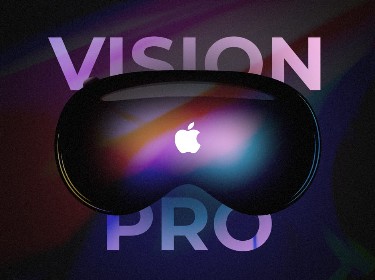To better understand the growth potential of augmented reality and virtual reality in the context of the global games market, it’s good to start with a clearer picture of the size and scope of the industry as a whole.
It’s estimated that the global games market will reach the $180.1 billion mark by the end of 2021. This year, console games alone have generated $49.2 billion. That’s according to an extensive quarterly update on international games market revenues published by industry-tracking website Statista. At the same time, the mobile segment will continue to generate more revenues than any other platform, but its share will drop to under 40% from today’s 52%.
The gaming industry has evolved from its humble beginnings. Gaming today has broken gender barriers and transcended the limits of age and social status to offer something for everyone. With such a huge opportunity to capture brand exposure and consumer loyalty, the video game industry is ripe for augmented reality (AR) and virtual reality (VR) applications. For the first time, the VR and AR market have added an entirely new dimension to the games sector, bringing in more than $7.5 billion in revenue in 2020, as demonstrated through hardware sales and software investment.
Many companies are looking at VR and augmented reality development services to deliver new and immersive experiences, while others want to use the technology as a promotional tool for their games and brands. But what exactly is VR/AR technology? How can it change the world of gaming in the decades ahead? Let’s find out in this article.
The current state of AR and VR
According to the International Data Corporation report, AR and VR generated revenues of $12 billion in 2020 and are projected to reach $72.8 billion in 2024. The market is currently dominated by gaming, with 80% of all AR and VR revenue generated by gaming activity.
The world’s largest social gaming company is EA, whose share price has surged by 20% this year, thanks to its investment in AR. Sony, whose gaming division is the envy of the industry, has jumped on the AR bandwagon too. With other tech companies joining in (Facebook, Google, Amazon amongst others), it looks like the market will shoot even higher. However, to begin, let’s first explain VR and AR and the difference between them.
Brief overview of VR
Virtual reality (VR) refers to the experience that gives a user a perception of being physically present in a non-physical world. Virtual reality artificially creates sensory experiences, which can include sight, touch, hearing and smell. A person using virtual reality equipment can “look around” the artificial world with a high-quality picture, move about in it, and interact with features or items presented to their senses.
Virtual reality is the computer-simulated re-creation of a 3D environment or a wide variety of other settings. It incorporates mainly auditory and visual feedback but may also allow other types of sensory input like haptics. Popularized by a range of active research projects and companies, virtual reality simulation development services have been used for medical, cinematic and gaming applications.
Simulation environments can be populated by electronic characters for social interaction or avatars that guide the user through diverse participation in a shared fiction.
Lowdown on AR
Augmented reality (AR) apps and games allow digital content to interact with real-world surroundings. This technology uses a mobile device’s camera and screen to let you see the world around you while also adding an overlay of cool animation. It’s like looking at the world through virtual glasses!
While software used for this purpose has existed for decades, the technology really took off when Apple released ARKit in 2017. These days, hundreds of companies are releasing new AR apps and games every week.
How is VR different from AR?
Despite being similar technologies with names that sound almost the same, virtual reality and augmented reality are entirely different. They both allow people to experience certain things they wouldn’t otherwise. But there are some key distinctions between the two that you should know about if you’re considering using one or both of them in your projects.
What’s most important to realize is that VR completely replaces or hides your real world with a highly realistic artificial environment while AR enhances your current reality by adding a computer-generated image on top of it.
Both of these technologies have a lot of benefits to offer, so let’s dive right in and check them out.
See how this Oculus Go VR hospitality virtual tour solution showcases locations in 360° virtual tours
The unique benefits of VR in gaming
Virtual reality is revolutionizing the way people play games. It opens up whole new dimensions in this sphere. The excitement also comes from the fact that the VR experience can be much closer to what you experience in the real world. For example, you can walk through a virtual landscape, feel the wind in your hair, and smell the flowers. Here are some of the other benefits of VR in gaming.
- VR technology allows players to be physically active while experiencing all the fun of traditional games.
- VR games encourage players to interact with each other. Unlike traditional gaming, which requires players to be physically present in the same room, VR offers unlimited opportunities to be sociable. Users connect to each other more naturally and build better relationships.
- Online gaming has become increasingly popular among young people, and VR gaming can enable them to attend gaming parties with friends. Video games and virtual reality are certainly not mutually exclusive technologies. Combining the two technologies can help open the door to new and more powerful gaming applications.
Now it’s time to see how well gaming pairs with AR.
The benefits of AR in gaming
The use of augmented reality in gaming can enhance the gaming experience immensely.
- Augmented reality allows players to do things differently. This means that, for any given set of choices, you can go for the strategies most likely to minimize the risks.
- AR also introduces change and variety to games, in real-time. A game like Super Mario Brothers, where the characters on the screen move in exactly the same way every time, would be boring. A game in which the movement of the characters has much more flexibility is considerably more entertaining.
- AR can let us play in a multi-dimensional space. In the real world, as we all know, we can move back and forth and up and down and side to side, whereas we cannot usually do this in a game.
- AR games can be social. You can share your gaming experience with your friends, for instance. And you can collaborate with them in some fashion. AR is mixing the real world with virtual things that you can interact with, which is especially exciting. At present, most games just use your camera-eye view. But imagine a scenario where the entire room was the game: you could walk around and touch things, and the game would evolve. Objects would appear, and you could shoot virtual laser beams at them — or something equally fun!
See how this VR real estate platform enables the creation of 360° virtual tours
Drawbacks and obstacles to broader adoption
![]()
Several barriers challenge the expansion of VR into gaming. One of them is the small user base. Unlike smartphone games, players must purchase special equipment to play. Last March, research from the Entertainment Software Association showed that out of 169 million gamers, only 29 percent of them owned a VR system.
Another is the high cost of development. The hardware itself is expensive, and developers must invest heavily in content creation. The Unity engine, for example, offers a library of assets that developers can use to create virtual content: but the content library is limited and the cost of obtaining new assets is relatively high.
Augmented reality, though, is a different matter. While augmented reality requires much the same technology as virtual reality — a headset with virtual lenses that overlay a view of the natural world with computer-generated graphics — you look at the screen and you don’t block out the real world. That is a substantial departure. VR and AR devices have great potential as gaming platforms — but for that potential to be realized, these technologies must become more comfortable and user-friendly. VR and AR devices are clunky and battery-intensive. However, researchers at the University of Washington’s Virtual Human Interaction Lab have designed a platform called “Cloudhead” that could allow VR and AR games to be played both comfortably and hygienically.
Although both VR and AR games present challenges, it is certainly possible to overcome them. As the VR/AR technology becomes more user-friendly and we find ways to make it more affordable for customers, the user base will eventually expand. As a result, the market will grow even further, consigning today’s difficulties to history.
Now let’s take a look at some types of games for both of the technologies.
Overview of AR/VR types of games
The average person with a PC or laptop will never be a significant VR gamer, but hundreds of thousands of VR games have already appeared for these two platforms. These games cover a range of styles, which means it’s hard to judge how successful they will be. Let’s start by exploring some devices for just VR games and then see what types of games we find for both VR and AR.
VR games on different devices
VR games are generally split into three categories. Games in which the player is the world itself (“open-world” games), games in which the player is a character in someone else’s world (“non-linear” games), and finally games in which the player is inside a virtual world that has been created for them and that they can navigate freely (“point-and-click” games).
Which one of these categories is best suited to VR depends on what you want to do. But, of course, this also depends on the type of device that you prefer to use.
PC VR games
When virtual reality became popular in gaming, hardware makers began adding VR to their laptops and computers. These new systems tend to be much less expensive than dedicated VR hardware. VR from your PC offers a lot of detail, but at a price well below that of a dedicated VR headset.
Mobile VR games
These games require minimum smartphone specifications, usually just a processor and sufficient memory, and are designed for use with Google Cardboard or similar headsets.
The VR games on game consoles
These are primarily designed for people who already play games on consoles. The VR games on game consoles use headsets, not complete VR systems, so there are some limitations on what they can do. An example is the Sony PlayStation VR Platform.
Types of VR games
Now, let’s consider some of the game genres that give the user a unique experience on VR. These are not all the VR gaming options, because that would be a long list, but simply the games that we think are better played on VR.
Shooting games
Aiming with guns is quite popular in VR gaming. All of them are interesting in terms of the technologies used and the immersion they offer to players.
Racing games
With VR, racing games are now more realistic than ever, thanks to head-mounted displays, which make it seem like you’re actually in the game. Since players can now move around freely, game developers are currently developing a broader range of VR racing games. They are incorporating buttons that are easier for players to reach while wearing the equipment, leading to games with motion control devices.
Horror games
As we all know, horror games occupy the top spots on Xbox or PlayStation platforms. They always attract new players because of their graphics and scary experiences. For some reason, though, they still find it hard to make the grade on VR platforms.
Because VR is so different from regular gaming, horror games creators have to think hard about how to exploit this new medium. Instead of simply telling the players what is happening, they have to make them experience it. They have to show them the monster and let them see the surroundings and even feel the creature’s breath.
In turn, this means that horror games have to be more interactive than regular games, which requires a lot of extra development work. But it’s work that must be done. We’re sure to be seeing many good horror games within a few years, and with VR they’ll prove much superior to games based on flat graphics.
Adventure games
Adventure gaming in VR is a genre that’s only just starting to get off the ground. It’s a tricky genre because the gameplay is built around a quest. It’s fun to explore, get lost, and solve problems, but that’s only part of it — you have to have a motivation to keep playing because the quest is not enough on its own.
City-building games
City-building games in VR make for an extraordinarily innovative and entertaining branch of the genre. The experiences offered by such games are potentially groundbreaking, their releases promising to usher in a new era for urban design games, virtual reality, and gaming in general.
Types of AR games
Now let’s delve into the types of AR games and see what makes them special.
Real-time strategy games
Real-time strategy games do a good job at imitating the perfect world. Each player controls a small number of units, and each player’s game moves are based on their immediate situation, which can change rapidly.
Multiplayer games
Multiplayer games are probably the best category of games to play entirely in augmented reality. They combine two core aspects of entertainment: competition and cooperation. In multiplayer AR games, each player is controlling a character in the game. This can be a cartoonish character, an animated monster, or a real person. The other players see your character in the real world, controlled by you.
Virtual character simulator games
The technology that enables AR games also allows for virtual characters. Virtual characters live in your environment and interact with you, making the game more like real life as we know it.
What are the most popular AR/VR games?
2021 was the year when VR finally really caught on in mainstream gaming. Countless experiences tore down the barriers to make VR not just an immersive technology but a whole new way of playing games. And the same can be said for augmented reality.
So now let’s take a look at some of the top games to play using both AR and VR technology.
Resident Evil 2
No game has been more prominent than Resident Evil 2. More than anything else this year, Resident Evil 2 showed us what VR could do and proved that it could deliver. Resident Evil 2’s gameplay and graphics were impeccable, and it told a great story. It’s easy to criticize Resident Evil 2 for its predictability and lack of innovation, but you have to give it plenty of points for being a top-quality game.
Superhot VR
Superhot VR, a real game-changer, is a fast-paced first-person shooter that challenges players to think on their feet. It is effortless, yet it manages to be endlessly surprising. As avid gamers state, it’s one of the most engaging games VR has seen so far — even if it’s by no means the only great game that you can experience in VR.
A Way Out
A Way Out is a clever multiplayer co-op game where you play a criminal trying to rescue your partner from prison. It is intelligent and incredibly tense. Yet there’s more to the game than your partner’s prisoner escape: it even turns you into weapons in the fight against the guards.
The Witcher 3
This game is a masterpiece and one of the finest games ever made. It perfectly blends dark fantasy with complex gaming mechanics. In addition, it has a great story and brilliant characters.
The Witcher 3 reminds you that video games are not movies. While movies have the advantage of brevity, video games have the advantage of complexity. You do not have only an hour or 90 minutes to tell a single story.
In a game like The Witcher 3, you are presented with hundreds of stories, and you are free to pick any one of them. They can be complex in ways a movie cannot because a film comprises just a single camera lens, and what a film-maker definitely doesn’t want is an excess of detail that the audience misses because it is too busy concentrating on the action.
Doom Eternal
Doom Eternal, the fourth game in the series, is a faithful reimagining of the classic shooter. The graphics are gorgeous, and the levels are long and varied. The gameplay is largely straightforward but also has a few surprises. It’s mostly a linear shooter, but it also offers a few areas where you can wander off. The game is full of monsters: blasting them is satisfying, helped by the simple but effective controls.
Check out this AR mobile App for Treadwater graphic novel that brings about better gaming experiences
Guide to developing AR/VR games
![]()
AR/VR games are a different animal from regular games. For one thing, they are a lot more fun to play, and for another, they can generate a lot of revenue.
If you wish to create your own AR/VR game from scratch, it’s important to bear in mind some useful tips. Here we propose to look into some basic steps in developing an AR/VR game:
Find a new game idea
There is an endless supply of new game ideas. The markets for their exploitation exist worldwide. Even nations that traditionally don’t allow games, like China, are now warming to them.
Target a device for your game idea (if you want to create a VR game)
If the audience for VR games is adults, you will likely need to invest in two devices: a headset (the one you wear) and a game controller (the one you hold).
If your target audience is teens, you might choose not to invest in the two devices and instead focus on creating an immersive, interactive story experience. In that case, you should probably opt for a headset and a game controller.
If you have an audience of all ages, you might instead want to create a socially interactive game experience. In that case, you might choose a controller-free headset.
Choose what type of graphics your AR/VR game will have
You need to model a whole world for your AR/VR game. The game design has to create a virtual environment that the player can inhabit. This world needs to allow the player to accomplish goals, with the way those goals are achieved determining what the player sees.
Find a development platform for your AR/VR game
AR/VR games generate a great deal of data. The development platform must be precise enough to measure all the targets accurately, and it must also process large amounts of data. This is one reason why it’s essential to choose an experienced software development company to build a bestselling game out of your idea.
There are other factors too, like target audience. But by and large, if the game is immersive and fun people will play it. The key lies in your study of the medium.
The future of VR/AR gaming
Demand for VR/AR gaming is soaring, with the market likely to hit as much as $571 billion by 2025. Sony has invested in the technology in recent years and has seen its share price grow 10 to 20 percent per annum. What’s more, tech giants are starting to dabble in the technology, having appreciated its potential.
Researchers and developers are looking forward to a world where AR/VR applications change the way we sense things. In just a few short years, virtual reality will go from being a relatively kludgy technology to something that’s just about indistinguishable from real life.
Like science fiction come true, we’ll be entertaining ourselves royally in this metaverse, thanks to a new interface that VR and AR combined look set to provide. Just as keyboards and screens reshaped how we interacted with computers, so this new interface will revolutionize how we think about interacting with people. It could be something you walk around with, or it could be something you wear, perhaps invisibly.
Elon Musk is working on Neuralink, and Facebook is changing its name to Meta. Clearly, the expanding role of VR and AR in our life is now being noticed. One thing we can be sure of is that eventually these technologies will get better and more realistic, and coalesce into a new medium of communication and consciousness.
Conclusion
The future of gaming is unequivocally linked to AR and VR. It’s equally exciting to think of the possibilities and applications in real life of these technologies. From teaching to building simulations to problem solving, AR and VR are here to help us.
They offer what you might call mixed reality, in which the real world and virtual worlds seamlessly merge. Mixed reality can be so much more attractive and alluring. When games are embedded in real-world objects, AR and VR make it possible to play, for example, in a virtual forest, or in a museum, or in a football stadium. As we’ve described, the emerging technology is allowing people to create and share information in new ways. The race to own these products and determine how they will affect our everyday lives is just beginning.
So, if you’re looking for a trusted augmented and virtual reality development company with a wealth of experience in AR/VR technology development, look no further.
PixelPlex will help you develop games and software based on AR/VR. Give us your unique idea, and our expertise will bring it to life.




